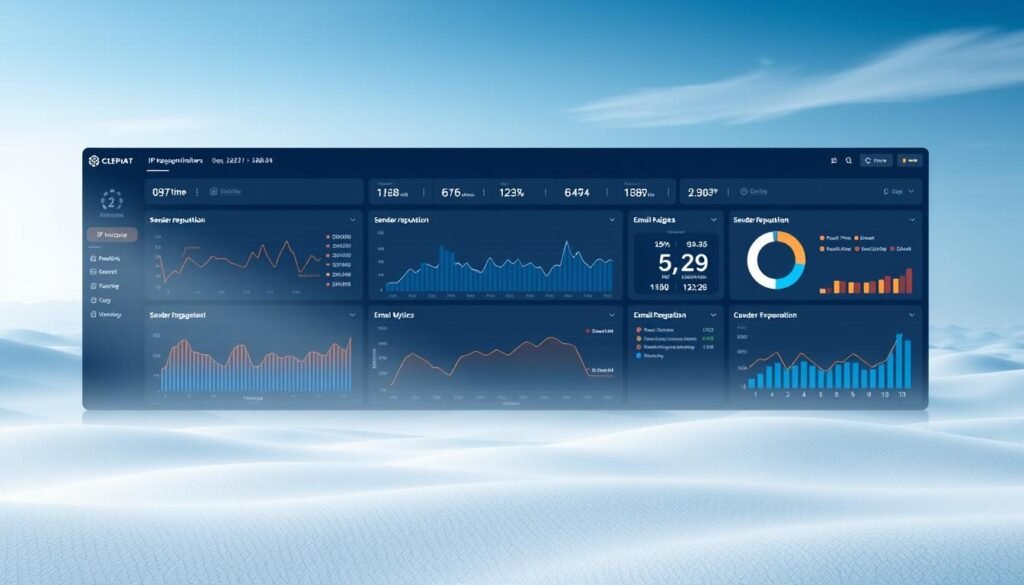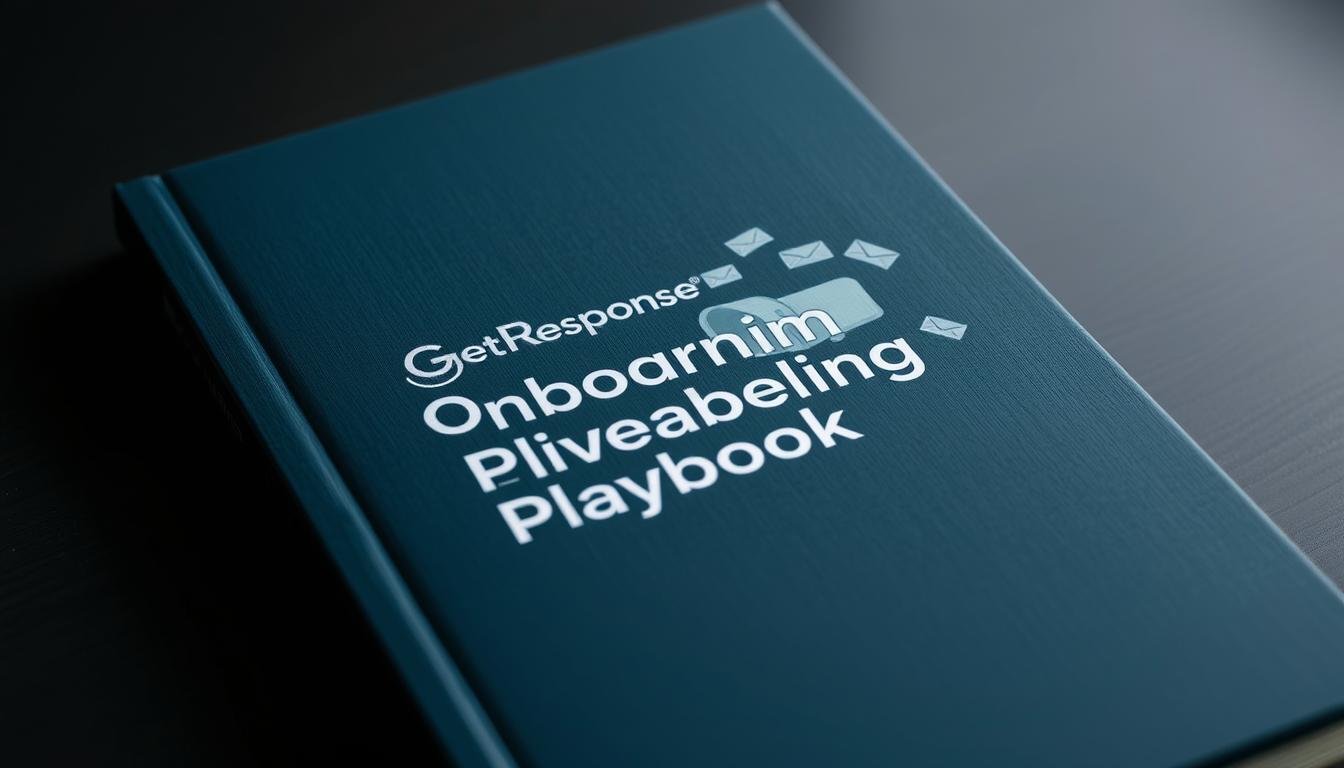You need a clear path to turn email programs into measurable revenue. This guide shows how an enterprise service blends infrastructure, expert support, and policies to protect your sender reputation from day one.
Trusted by brands for over 25 years, the platform manages delivery in-house and pairs dedicated IPs with proactive domain oversight. That means higher inbox placement and faster time to value for your business.
The approach combines high-capacity sending—up to 5 million messages per hour—with hands-on assistance from a Customer Experience Manager and an onboarding lead. You get step-by-step guidance on compliance, list hygiene, and reputation monitoring so campaigns reach the right audience.
Key Takeaways
- Enterprise delivery and support: Dedicated IPs and a CX manager protect your sender reputation.
- Fast scale: 5M-per-hour capacity keeps critical windows clear.
- Proven ROI: Independent analysis shows rapid payback and strong returns.
- Hands-on guidance: Live training and structured go-live shorten time to value.
- Always-on help: 24/7 multilingual support and clear escalation points.
Enterprise-grade onboarding that turns email marketing into measurable revenue
This enterprise-grade introduction aligns your systems and team workflows so campaigns drive predictable revenue. It pairs high-capacity sending—up to 5 million messages per hour—with proven setup practices that protect sender reputation and increase inbox placement.
The platform delivers a 99% deliverability rate and established relationships with major mailbox providers in the US and EU. That technical backbone matters, but the real difference comes from experts who translate it into business outcomes.
Your dedicated manager guides targeting, automation, and measurement so marketing campaigns compound over time. Forrester data shows a 305% ROI, under three months payback, and a $302K NPV for organizations using the service.
- Clear revenue path: onboarding aligns deliverability, engagement, list growth, and sales.
- Faster execution: automation and documented workflows cut campaign assembly by 73%.
- Always-on support: 24/7 coverage across channels, 106s average reply, and 97% CSAT.
From inbox challenges to outcomes: how we improve deliverability and ROI
Inbox barriers—like spam traps and irregular sending—often hide the revenue your email programs should capture. We identify the issues quickly and map fixes to business goals so your teams see measurable gains.
Common deliverability hurdles that stall marketing campaigns
Poor list quality, spam traps, and inconsistent cadence reduce inbox placement and hurt ROI.
Misaligned content-to-audience fit and unmanaged undeliverable addresses make engagement fall off.
Mapping services to your specific business goals
Apply the right tools—AI-based compliance, advanced list hygiene, and delivery tracking—to keep your contact list healthy.
We link data collection, consent management, and testing to growth KPIs for each customer segment. Use marketing automation to replace manual steps and shorten the path to order.
What success looks like: higher deliverability rate, faster time-to-value, more sales
Learn deliverability through transparent audits and clear remediation steps that protect sender identity.
- Routine seed tests, blocklist checks, and content diagnostics prevent issues before they scale.
- Operational A/B testing on subject lines and send times continually improves campaign performance.
- Define success early—engagement, inbox placement, and revenue per send—and review regularly.
For a practical comparison of agency-focused services and options, see this agency comparison to inform your next steps.
GetResponse Max Onboarding Deliverability Playbook
Structured execution wins inbox placement. A single path ties policy, technical setup, and testing into repeatable work you can run across accounts. That clarity reduces errors and speeds time to steady performance.
The pillars: compliance, list hygiene, reputation, and delivery tracking
Start with explicit consent, rigorous list hygiene, and continuous tracking so your sender footprint stays clean from day one. An in-house Deliverability Team (since 1998) works with mailbox providers and blocklist operators to protect domain reputation.
Step-by-step: setup, implementation, and go-live managed by your onboarding manager
- Account setup and DNS configuration (SPF, DKIM, DMARC) to authenticate domains.
- Technical implementation, content review, and assisted IP warmup when qualified — led by your onboarding manager.
- Validation: seed tests, inbox placement checks, and spam scoring before full-volume sends.
Automation-first approach for scalable email marketing campaigns
Implement automation early with welcome, re-engagement, and lifecycle flows. This scales volume while preserving engagement and reducing list fatigue.
| Pillar | Action | Outcome |
|---|---|---|
| Compliance | Consent policies, AI checks | Lower risk, stable reputation |
| List hygiene | Advanced cleaning, segmentation | Higher engagement, fewer bounces |
| Tracking | Seed tests, real-time alerts | Consistent inbox placement |
Review performance often with your experience manager, document SLAs, and exit onboarding with a measured send plan that protects long-term performance over time.
Deliverability foundation: dedicated IPs, Assisted IP Warmup, and 100% in-house delivery

Start with infrastructure that protects your sender identity and performance. Each MAX account gets at least one dedicated IP to build a unique sending reputation. Your Customer Experience Manager continuously monitors IP and domain signals so issues are caught early.
Dedicated IP and domain reputation monitored by your Customer Experience Manager
Your manager watches bounces, complaints, and blocklist status. This hands-on oversight keeps your sending consistent and ties technical signals to business goals like sales and engagement.
Assisted IP Warmup for qualified customers sending millions from day one
When you need scale, Assisted IP Warmup stages volume by domain and segment. Engineered ramps reduce risk while preserving delivery rate and overall performance.
In-house delivery management since 1998 for full control and compliance
The product has managed delivery internally for years, providing direct relationships with US and EU mailbox providers. That control supports a 99% delivery rate and faster responses from support when anomalies appear.
- Tools: seed testing, throttling, and authentication alignment to stabilize sends.
- Automation: warmup and segmentation to keep signals positive across domains.
- Measurement: correlate inbox placement with clicks, conversions, and sales to quantify impact.
Your expert team: hands-on guidance from day one
You get direct access to specialists who translate platform capabilities into measurable email outcomes. This team helps you avoid common setup mistakes and keeps progress tied to your KPIs.
Customer Experience Manager: strategy, best practices, and performance oversight
Partner with a Customer Experience Manager who aligns strategy to your KPIs and monitors performance across the account. They surface risks early and propose clear next steps.
Onboarding Specialist: training sessions, review calls, and implementation
An onboarding manager runs 1-on-1 sessions, live Q&A, and review calls so your team learns by doing. Practical templates and checklists speed adoption and reduce rework.
Key Customer Manager: cross-functional leadership and contractual support
The Key Customer Manager coordinates stakeholders, manages scope, and handles contractual questions. This keeps timelines steady and expectations clear.
Product Support Expert: technical configuration and day-to-day issue resolution
Rely on a Product Support Expert to configure the platform, resolve issues fast, and document changes for repeatable outcomes. Guided walkthroughs of integrations and data flows save time.
- Tools & information: templates, checklists, and practical playbooks for everyday execution.
- Service clarity: SLAs, escalation paths, and scheduled reviews that respect your time and launch calendar.
- Knowledge transfer: training on segmentation, testing, and best practices so experience lives inside your organization.
Personalized onboarding plan: training, reviews, and continuous optimization

We design each onboarding around your priorities so implementation moves from theory to practice fast. The plan blends focused training, scheduled reviews, and a shared action plan to keep your account progressing.
One-on-one training tailored to your marketing automation and campaign needs
Start with a discovery session that sets goals, defines list strategy, and outlines the first step. Then join 1-on-1 sessions that use live examples and walkthroughs.
These sessions focus on segmentation, email marketing automation, templates, and reporting. You gain hands-on setup and real-time feedback that shortens time to value.
Regular implementation reviews with live Q&A and next-step recommendations
Follow a step-by-step calendar with milestones and owners so implementation stays on track.
Schedule periodic review calls to validate progress, surface blockers, and align next steps. Each call ends with a clear action plan for the customer and their team.
| Phase | Core activity | Expected outcome |
|---|---|---|
| Discovery | Goals, list strategy, contact list review | Prioritized roadmap and defined owners |
| Training | 1-on-1 walkthroughs, automation setup, templates | Faster implementation and consistent campaign quality |
| Review | Progress checks, live Q&A, recorded summaries | Clear next steps and institutionalized knowledge |
Measure improvements with simple dashboards that track deliverability, engagement, and conversions. Capture decisions in the account action plan and create a feedback loop after each launch to iterate quickly.
Campaign acceleration: segmentation, personalization, and automation that convert
When you align audience signals with automated journeys, campaigns convert more consistently and scale with less friction. Use segmentation that mirrors buyer stages so offers match interest and time-to-purchase.
Advanced segmentation and A/B testing to learn what drives performance
Build segments from behavioral and transactional fields to target relevant groups. Run disciplined A/B tests on subject lines, timing, creative, and incentives.
Track winners and promote them from experiments into always-on campaigns to improve conversion and roadmap clarity.
Behavioral triggers and personalization to deliver the right message at the right time
Use triggers—browse, product view, add-to-cart, and purchase—to send contextual emails that match intent and time.
Combine dynamic content with customer attributes to personalize offers and cross-sell recommendations that lift average order value.
Abandoned cart automations that recover revenue and boost customer experience
Deploy abandoned cart automations to recapture intent and increase sales without extra manual work. Sequence reminders, incentives, and social proof to nudge orders over the finish line.
Align cadence with sending windows and throughput so timely cart emails land when customers are most likely to act.
| Practice | Action | Impact |
|---|---|---|
| Segmentation | Stage-based lists, tags, behavior fields | Higher relevance, more conversions |
| A/B Testing | Subject, timing, creative, incentives | Clear winners, better roadmap choices |
| Automation | Triggered flows, abandoned cart sequences | Recovered orders, less manual work |
| Throughput & Timing | Schedule bursts during peak windows | Faster arrival, better campaign performance |
Proof of performance: deliverability, speed, ROI, and support metrics
Independent benchmarks show a clear link between technical capacity and faster revenue for enterprise email programs.
Forrester reports a 305% ROI, $302K NPV, and payback in under three months. Teams also cut campaign assembly time by 73%.
The platform supports up to 5 million sends per hour with a 99% deliverability rate. That scale helps you hit peak windows and lift sales and cart recovery.
Support is expert-led: 24/7 live chat, 106-second first reply, 97% CSAT across eight languages and four channels. Work with your customer experience manager to turn metrics into action.
Ready to see it? Book demo sessions to review your account, map quick wins, and build a migration plan. Request a demo or book demo time to learn deliverability rate and platform performance live.

